Today, we had the sobering experience of visiting the Fukushima prefecture in Northern Japan. On March 11th, 2011, Japan was devastated by the strongest earthquake it has ever experienced with an astounding magnitude of 9.0Mw. This mega-earthquake created a tsunami wave with a height of 40 meters in some areas that flooded many of Japan’s Eastern prefectures. The tsunami also breached the Fukushima nuclear plant which ultimately led to three core reactors melting down and the controlled releases of radiated vapor and water into the surrounding vicinity. This led to the government ordering the evacuation of a numbers of towns in Fukushima that were deemed to be severely contaminated by radiation. People had to leave their homes, friends, and roots behind them as they were placed in temporary refugee centers and housing. As time progressed, it became apparent that they would not be able to go home for a very long time since the radiation was a long lasting issue and the government was ill prepared to handle the situation. These people were left without proper homes or a definitive answer as to what to do or where they should go. This triple disaster left many people shattered, anxious, and fearful.
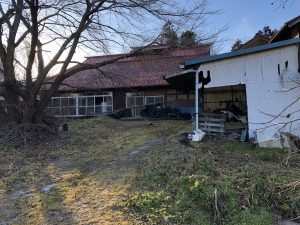
An abandoned home in Nihonmutsu. Many homes were left abandoned like this.
After 7 years of waiting, some of the municipalities that were previously evacuated were re-opened by the government in 2017, encouraging residents to come back. Yet only a small proportion of the previous population have come back to many of these towns, for some people are still wary about the residual radiation while others have moved on to live somewhere else. The government realized they would have to work hard to convince people to come back in order to re-populate these towns. Their efforts could be seen when we visited Iitate village and Nihonmutsu city.
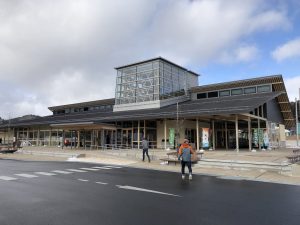
Rest stop in Iitate
When we arrived in Iitate village, we stopped at a rest stop. Now this rest stop was completely new, furnished with stylish wood trim, white walls, and open glass windows and doors. The inside had a welcoming feeling to it with green plants in pots hanging from ceiling and little stores you could buy cute packaged foods. In front of building, there were these metallic sculptures of men, women, and nature all in peace and unison. The art invoked a sense of community, nature, and peace; suggesting that was the premise behind this town. Later on, we went to the town’s community center for lunch and a presentation. Just like the rest stop, this building was new, featuring the same modern wood and glass facade. I also found more sculptures here, some with men and women embracing each other, a mother holding her beloved child, and a family in a circle, hand to hand. All of these sculptures invoked the same sense of community and harmony that I felt at the previous sculpture. By renovating these public building and filling them with community centered artworks, the government aims to aid this community and help it slowly rebuild itself.
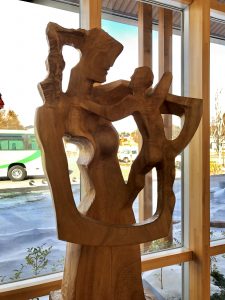
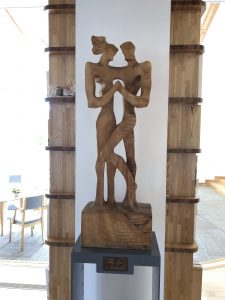
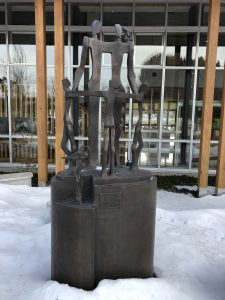
Later on when we visited Nihonmusu, we saw how the community was slowly rebuilding itself. We were given a tour of a local organic farm where we saw extravagant solar panels angled over a plot of vegetables. The farmers here are being resilient to issues that they have faced and the issues they continue to face by making the most out of their land and resources. Instead of giving up and moving somewhere else, they choose to stay in this town and to continue farming.
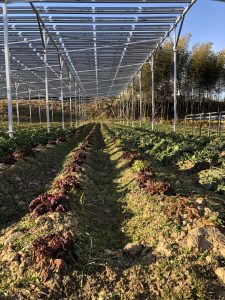
Farming under Shared Solar Panels in Nihonmutsu
Both towns gave us a sample of how the triple disaster affected these towns and those that lived there. Despite all that they went through, some of them have decided to come back to continue on their lives as these towns begin to re-open. With the governments help and the people’s will, these towns are slowly growing and there is hope for them yet.
Recent Comments